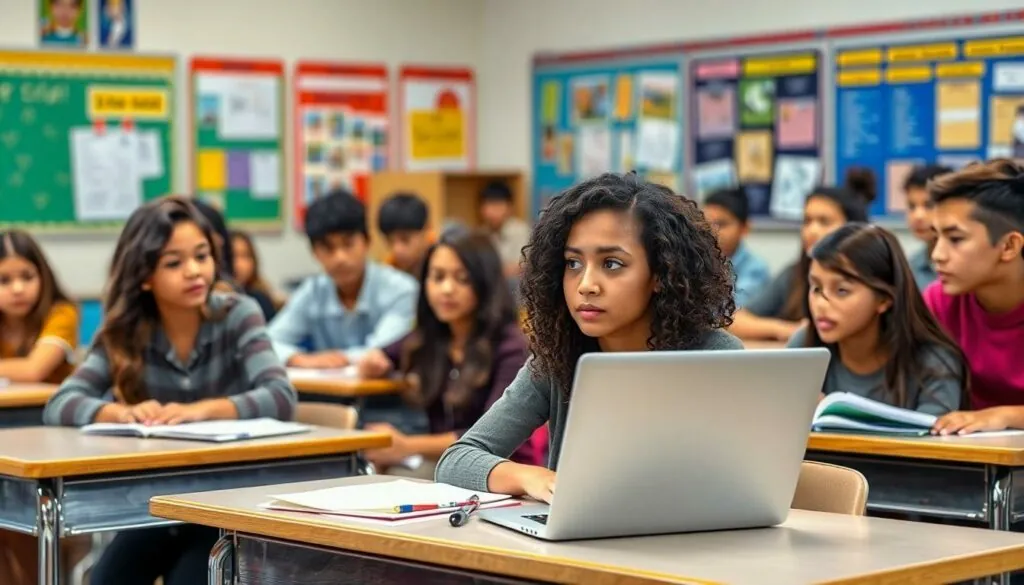In today’s tech-savvy world, students have a secret weapon: ChatGPT. This AI marvel can whip up essays faster than a caffeine-fueled all-nighter. But how can teachers tell if their students are using this digital assistant instead of flexing their own writing muscles?
Table of Contents
ToggleUnderstanding Student Use of ChatGPT
Determining whether a student has used ChatGPT involves examining various indicators. Observing writing style changes can provide initial clues. A sudden shift to overly formal or complex language often signifies AI-generated content.
Checking for inconsistencies in content is crucial. If ideas lack depth or cohesion, it may indicate reliance on automated tools. Familiarity with a student’s prior work facilitates this assessment, as discrepancies become apparent with comparative analysis.
Reviewing submission timelines also offers insights. If a student submits work unusually fast, this might suggest they utilized ChatGPT for rapid output.
Engaging in discussions with students about their writing process can reveal additional information. Asking open-ended questions encourages them to explain their thought process and reasoning. Students struggling to articulate their work may indicate lack of ownership, hinting at potential use of AI tools.
Exploring similarity to online sources is another effective method. Conducting web searches can uncover striking similarities to content generated by ChatGPT.
Utilizing plagiarism detection software can further clarify suspicions. Such tools can highlight instances of unoriginal text, which may signal AI involvement.
Finally, maintaining an open dialogue about academic integrity fosters awareness. Educators can emphasize the importance of original thought and ethical writing practices. Reinforcing these values helps students understand the significance of authentic learning experiences.
Indicators of AI-Generated Content

Identifying AI-generated content involves examining specific indicators. Unusual patterns in writing style can reveal the use of tools like ChatGPT.
Unusual Writing Style
Students often show distinctive characteristics in their writing. Consistent tone and structure across an entire piece may indicate AI assistance, contrasting with individual voice fluctuations. Sudden shifts in vocabulary complexity can signal that the work is not wholly original. Awareness of repetitive phrases or unnatural transitions also hints at AI generation. Observing overly formal language in casual topics raises further questions. Variation in punctuation and sentence length often does not reflect a student’s typical style. Tools like ChatGPT may produce polished work, lacking the authentic imperfections typical in student submissions.
Inconsistencies in Knowledge
Students may demonstrate gaps in understanding when using AI-generated content. Disparities between topic familiarity and content depth can emerge, showcasing a lack of personal insight. Inconsistencies in facts or arguments frequently appear, as AI may inadvertently misinterpret complex ideas. Educators should evaluate connections between ideas to detect any disjointed reasoning. Citing obscure sources without adequate explanation can reveal a reliance on AI, highlighting a failure to grasp related concepts. Observing generalizations without personal examples may suggest that students have not engaged deeply with the subject matter. Each of these signs serves as a red flag for potential AI involvement in student writing.
Tools for Detection
Educators can utilize various tools to identify if students have employed ChatGPT for their writing tasks. These tools enhance the assessment process and promote academic integrity.
Plagiarism Checkers
Plagiarism checkers scan written content for similarities with existing sources. Popular tools, such as Turnitin and Grammarly, provide comprehensive reports highlighting matched text. By comparing student submissions against extensive databases, teachers can uncover potential AI-generated text that closely resembles published materials. Checking for proper citations also reveals the accuracy of sources used. Such tools can serve as initial indicators, revealing inconsistencies and textual similarities that warrant further scrutiny.
AI Detection Software
AI detection software offers a direct approach to identify AI-generated content. Tools like GPT-2 Output Detector and Copyleaks can analyze specific writing patterns characteristic of AI tools. These applications use algorithms to evaluate the likelihood that a piece of writing originated from AI. Features like writing style analysis and semantic coherence checks contribute to the software’s effectiveness in spotting AI influence. Employing such technology allows educators to confidently assess student work against a backdrop of advancing AI capabilities.
Observational Techniques
Educators can implement a variety of observational techniques to determine if a student used ChatGPT in their writing. By paying attention to specific details, teachers can identify potential red flags in student submissions.
Analyzing Writing Patterns
Identifying unusual writing patterns provides insight into the authenticity of student work. Inconsistencies in tone or vocabulary complexity might signal AI involvement. Observing abrupt shifts in style between different assignments offers additional clues. Students who typically demonstrate a casual writing style yet submit a formal piece could be relying on AI assistance. Moreover, a lack of authentic errors or personal anecdotes often indicates generated content. Tracking these discrepancies across submissions can help educators assess their students’ writing authentically.
Verifying Citations
Correct citation practices reflect a student’s understanding of academic integrity. Checking whether students properly credit their sources can reveal reliance on AI tools. Inaccurate or missing citations not only indicate potential use of AI but also highlight gaps in research skills. Educators should scrutinize students’ reference lists for authenticity and relevance. A student who struggles to articulate where their information came from might not have done the necessary research. Engaging in conversations about sources can further clarify whether students comprehend their cited material.
Recognizing the signs of ChatGPT usage in student writing is essential for educators committed to fostering academic integrity. By employing a combination of observational techniques and technological tools, teachers can effectively assess the authenticity of student work. Engaging students in discussions about their writing process not only aids in detection but also encourages ownership of their learning.
Maintaining an ongoing dialogue about the importance of original thought and ethical writing practices will help students appreciate the value of their own voices. As AI tools continue to evolve, staying informed and proactive will ensure that educators can uphold the standards of academic integrity in their classrooms.





